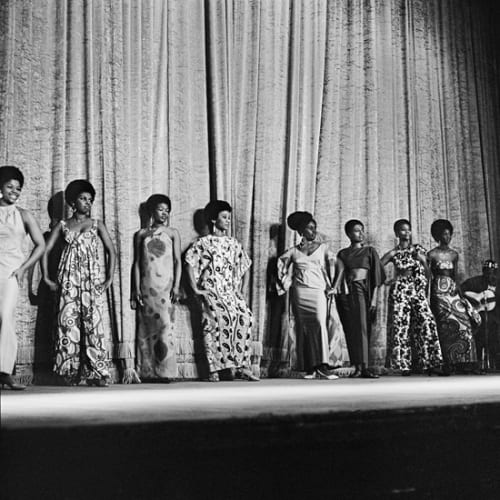Some artists are lauded for the quality of work, while others are praised for its impact. Photographer Kwame Brathwaite is celebrated for both. In the '50s and '60s, when segregation loomed triumphantly and black musicians’ album covers celebrated white faces in lieu of black ones, Brathwaite set out to capture the beauty of Harlem’s black residents via photos.
An exhibition of his work appropriately titled Black Is Beautiful: The Photography of Kwame Brathwaite, is on exhibit at the Skirball Cultural Center until September 1, the first stop in its national tour. The exhibition provides a snapshot of how Brathwaite’s photography fueled the “Black is Beautiful” movement in Harlem and throughout the U.S.
A dedicated student of Marcus Garvey, Brathwaite created artwork that unapologetically uplifted blackness: black skin, black voices and black perspectives — in an era when anything black was literally pushed to the back of buses and rendered almost completely invisible in mainstream media.
In this time when black people were still referred to as “negroes” or “coloreds,” Brathwaite defiantly described himself as “African,” not in a dismissive, monolithic way, but to celebrate his ties to the motherland, even as specific geographical ties remained unknown. In fact, a centerpiece of the exhibition features Sikolo Brathwaite, Brathwaite’s wife, adorned in an intricately beaded, African-inspired headpiece.
The headpiece draws the viewer into the photo, but her dark brown skin, positioned against the orange backdrop, sustains the gaze. Sure, the beads dazzle, but the stars of the photo are her skin, eyes and cheekbones, which pop under the strobe lights.
“He [Brathwaite] wanted to make sure that there was incredible color and there was incredible depth that you see in a lot of African art, you know—the fabrics, the patterns…” says Kwame S. Brathwaite, Brathwaite’s son and the exhibition's co-curator.
“But the thing that people always bring up that I find amazing,” Brathwaite continues, “is the lack of shadow in his portraits, which is a very difficult thing to achieve when you have to light brown skin.” Brathwaite took great care with lighting, angles and distance to ensure that the particular skin tone of each subject radiated, in black and white and color photos.
Whether staging intimate portraits of dark-skinned black women or capturing action shots of activists like Nina Simone and Muhammad Ali, Brathwaite’s work incessantly conveyed the underlying message — that black is beautiful and worthy of celebration. Like his more famous contemporary, Gordon Parks, Brathwaite was self-taught and, like Parks, Brathwaite magnified the dignity of his subjects with each click of his camera.
The exhibition showcases how Brathwaite fused photography with fashion and jazz to shape a cultural movement: In 1956 he and his brother Elombe Brath created the African Jazz-Art Society & Studios, a collective of artists, writers, dancers and designers; and in 1962 the two started Grandassa Models, a modeling group for black women.
These women weren’t professional models, however; they were leaders in their communities — nurses, teachers, designers, hair stylists — who represented the diversity of blackness. They modeled their natural hair and self-designed gowns at fashion shows in Harlem, the Bronx and beyond, not as objects, but as proud symbols of beauty that weren't Eurocentric.
The exhibition boasts pictures of the Grandassa Models — group shots and remarkable portraits — alongside the clothing they designed and the album covers Brathwaite pushed to have dark-skinned black women plastered on.
The collection of photos, clothing and album covers is a celebration of black history as much as it is a celebration of Brathwaite’s art, as it captures the seeds of a cultural movement more than half a century in the making.
Today, the “Black is Beautiful” hashtag has more than 4.5 million posts on Instagram, thanks to artists like Brathwaite and amateur and professional photographers who use it to categorize their work. However, some professional digital photographers can’t capture brown skin as exquisitely as Brathwaite did, and they’ve never been restrained by a medium format camera and a single 12 shot roll of film.
Although the exhibition will only reside in L.A. until the end of summer, the book, “Kwame Brathwaite: Black Is Beautiful,” debuts May 1, offering art and culture lovers a perennial reminder that black was, is, and will always be beautiful.
Skirball Cultural Center, 2701 N. Sepulveda Blvd., Brentwood; (310) 440-4500, skirball.org. Through Sept. 1.

